They’re back! Endangered orcas surface off San Juans after nearly 6 weeks away
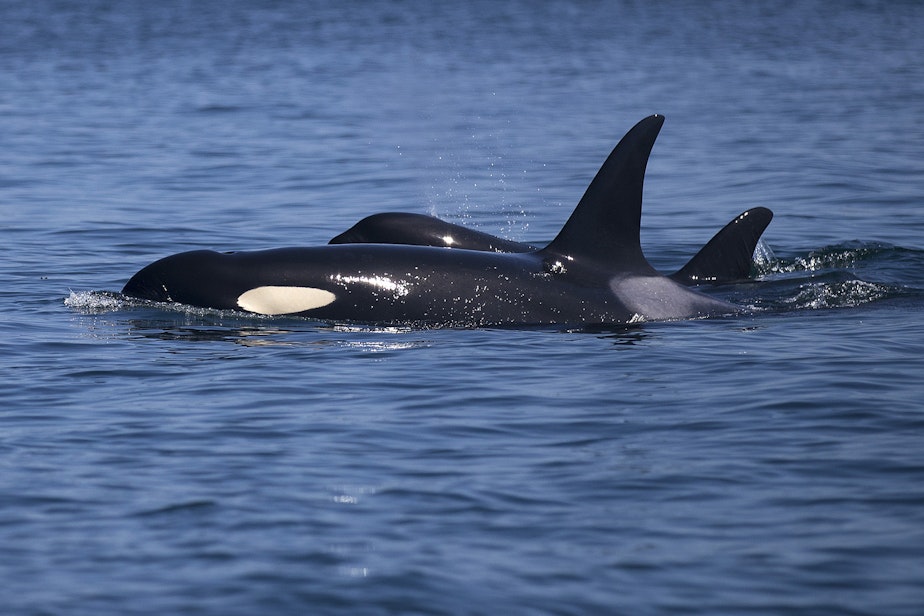
Southern resident killer whales returned to their usual summertime haunts on Thursday for the first time since July 6, to the delight of San Juan Island’s human residents.
Researchers, residents and whale watchers saw nearly all of the orcas’ J pod, about 21 animals, off the west side of San Juan Island.
The day’s excitement began a little before 3 a.m.
Die-hard whale fans including Oceans Initiative researcher Sarah Colosimo heard the distinctive squeaks and squeals of J pod on an underwater microphone that live-streams the sounds of Haro Strait 24/7.
“I actually slept with the hydrophone on because I was anticipating that I would be able to hear them last night,” Colosimo said.
J pod had been spotted across Haro Strait, near Victoria, British Columbia, earlier that evening.
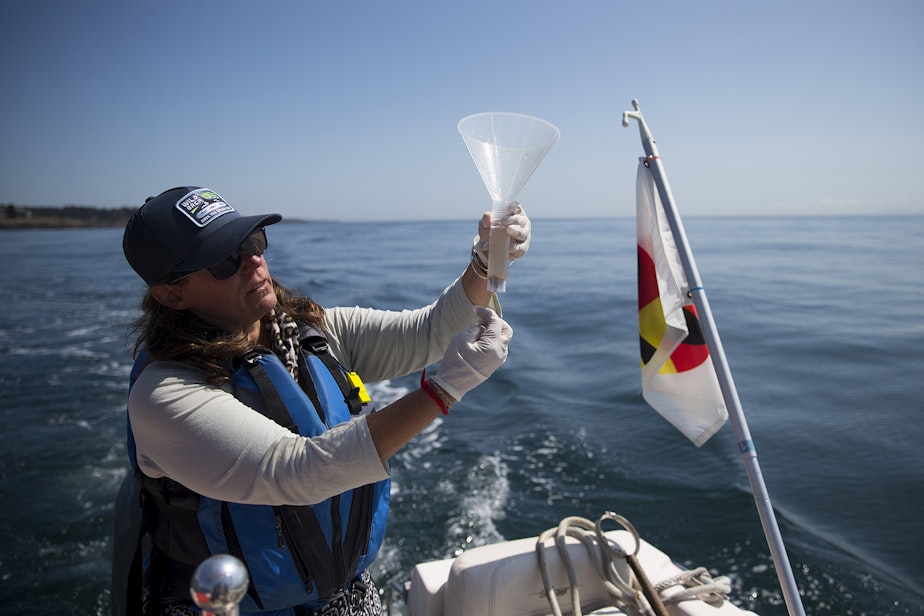
Word spread quickly among the island’s community of orca lovers.
“We're absolutely 100 percent thrilled to see them,” Deborah Giles with the University of Washington's Center for Conservation Biology said aboard her research boat off Lime Kiln Point while waiting for a thick fog to burn off.
“There's calls and texts and social media going like crazy right now," Giles said. "Everybody's wanting to see who [among the whales] is here and see how they're doing."
"It's very exciting," she said. "I mean, these are like family members to a lot of us.”
On shore, the Oceans Initiative team of field researchers has been trying to study how boats interfere with the endangered whales’ behavior since the beginning of July.
Thursday was only the third day this year that orcas have shown up to be studied.
“Last year, we had 29 whale days in a three-month season,” Colosimo said.
At one point on Thursday, a crowd of 11 boats was watching the whales surface and splash along the island’s west coast, with dozens more people watching from shore.
With a Washington Department of Fish and Wildlife law enforcement boat among them, all the boaters stayed outside the voluntary, quarter-mile wide “no-go zone” designed to protect the southern residents, according to Colosimo.
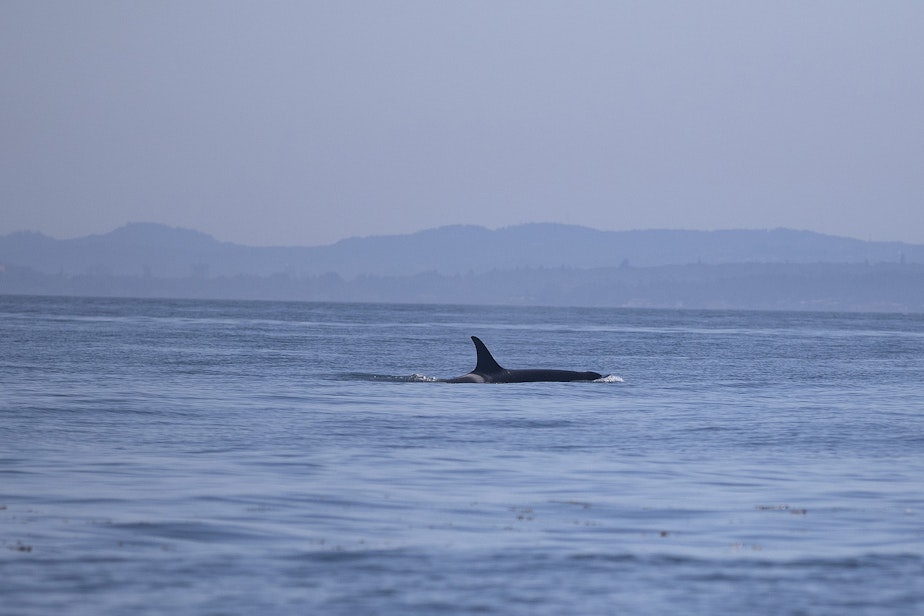
The other two southern resident pods, K and L, were not sighted Thursday.
It’s been a rough year for the endangered orcas: Earlier in August, the Center for Whale Research, which maintains the official census of the animals for the National Oceanic and Atmospheric Administration, declared three of them presumed dead, dropping their known population to 73.
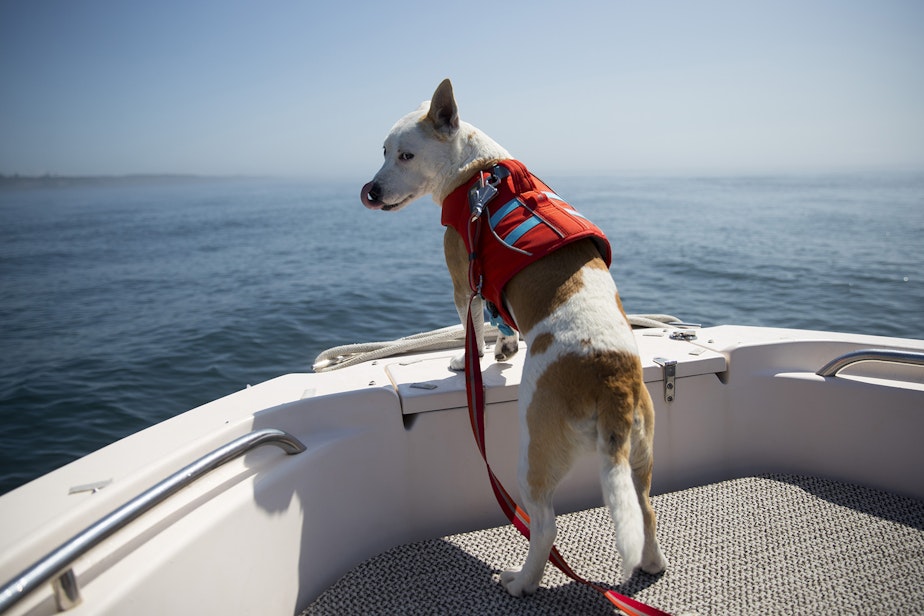
The population hasn’t been that low since 1976, the year that the trapping and removal of the whales from the wild for aquariums and live entertainment ended.
Once Thursday's fog burned off, Giles and her team (3 humans, 1 dog) were able to gather floating globs of orca scat for the first time in more than a month.
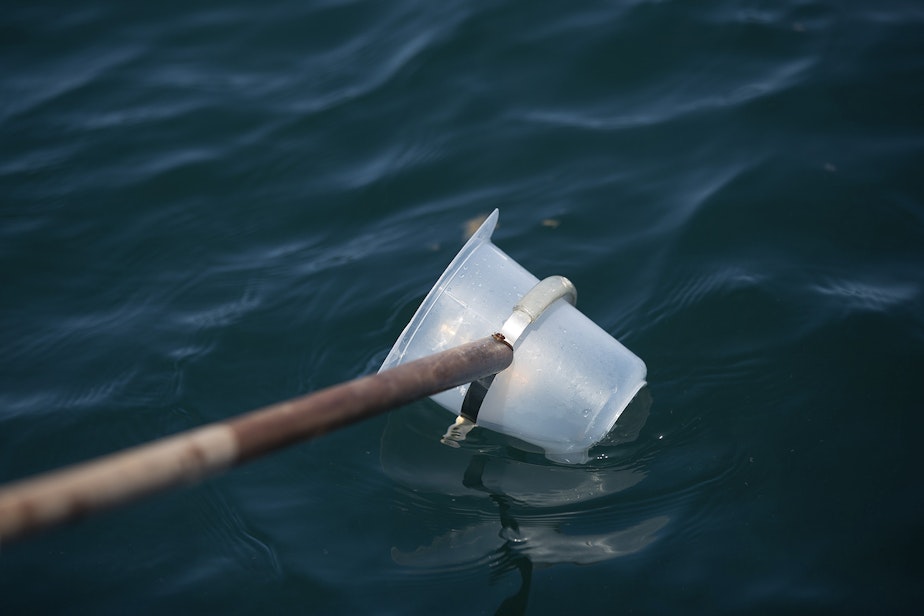
The fecal samples can reveal everything from stress and pregnancy hormones to which rivers the orcas’ salmon diet came from.
A dearth of Chinook salmon from Canada's Fraser River is believed to be a key factor in the orcas' decline as well as their absence from their usual core habitat around the San Juan Islands.
“Everything that we're doing is in order to help educate policymakers and the public in order to come up with ways of recovering this population that we haven't done yet,” Giles said. “Because what we're doing so far isn't working.”
“It’s been a very bleak season for the whales,” Jeanne Hyde with Friday Harbor’s Whale Museum said.
But this day, she said, was “awesome.”
“Today, we saw J 56, that’s the new calf in J pod,” Hyde said after watching the pod swim up and down the island’s west coast, often less than 100 yards from shore. “We saw her and her mom and her two uncles.”
“It always does your heart good to see those little ones.”





